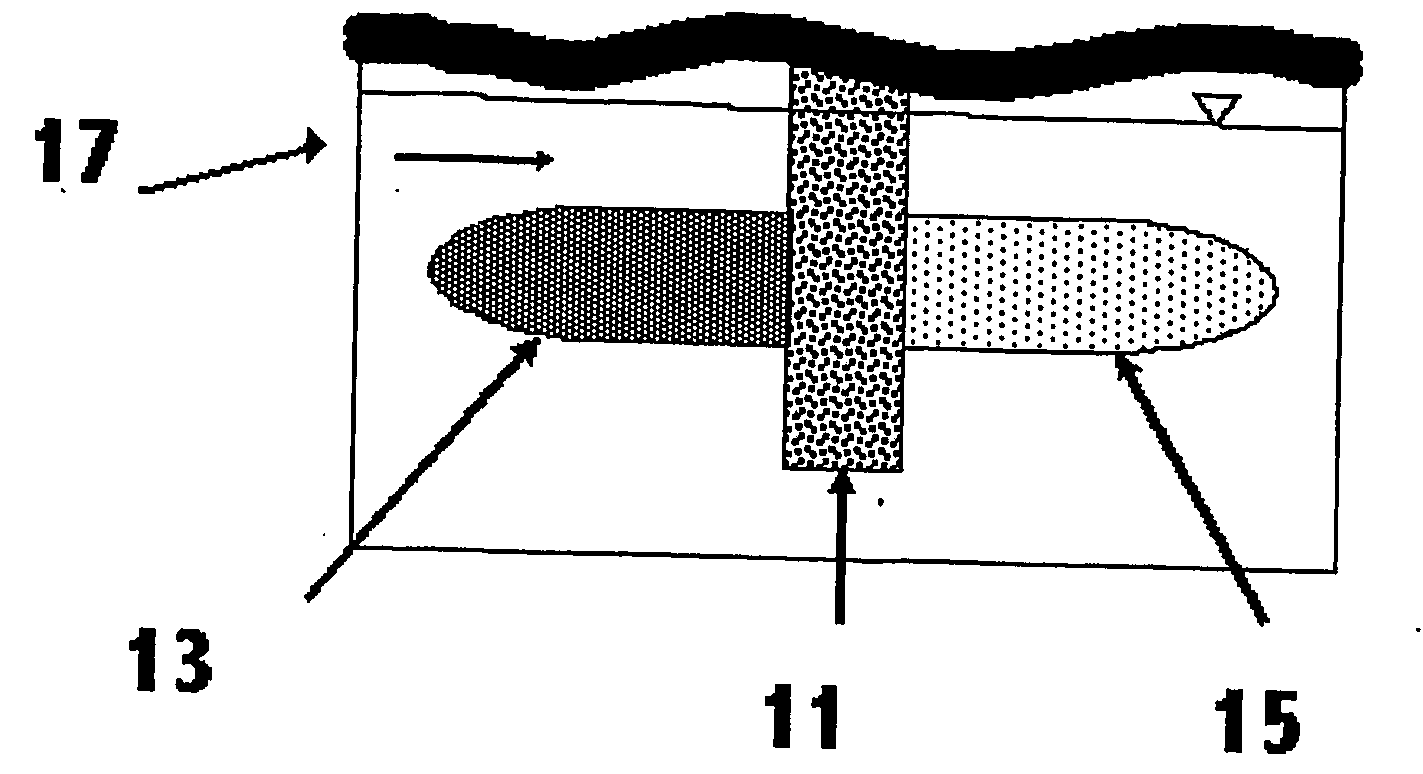Composite material for a permeable reactive barrier
a reactive barrier and composite material technology, applied in water treatment compounds, sustainable biological treatment, biological water/sewage treatment, etc., can solve the problems of destroying the activity of enzymatic reactions, ineffective treatment of sites contaminated with various organic chemicals, and using iron filing alone, etc., to achieve the effect of convenient us
- Summary
- Abstract
- Description
- Claims
- Application Information
AI Technical Summary
Benefits of technology
Problems solved by technology
Method used
Image
Examples
Embodiment Construction
[0015] The present invention relates to compositions for treating contaminated regions that are easy to use, economical, and effective. Compositions in accordance with the principles of the present invention provide an admixture of organic and inorganic particles that have been formed into a pre-shaped structure. In one embodiment of the present invention, the pre-shaped structure is preferably a cylindrical pellet or a rectangular prism such as a cube. It is desirable to combine the organic and inorganic materials into a pre-shaped structure to ensure that the two classes of ingredients are uniformly and intimately co-mingled so that the key individual components (i.e., the organic particles that serve as food for microorganisms and the inorganic particles that serve as chemical oxygen scavengers) are and will continue to be uniformly distributed throughout a reactive barrier (PRB), or soil, for a relatively long period of time. As seen in FIG. 1, the PRB 11 is situated near the co...
PUM
 Login to View More
Login to View More Abstract
Description
Claims
Application Information
 Login to View More
Login to View More - R&D
- Intellectual Property
- Life Sciences
- Materials
- Tech Scout
- Unparalleled Data Quality
- Higher Quality Content
- 60% Fewer Hallucinations
Browse by: Latest US Patents, China's latest patents, Technical Efficacy Thesaurus, Application Domain, Technology Topic, Popular Technical Reports.
© 2025 PatSnap. All rights reserved.Legal|Privacy policy|Modern Slavery Act Transparency Statement|Sitemap|About US| Contact US: help@patsnap.com



